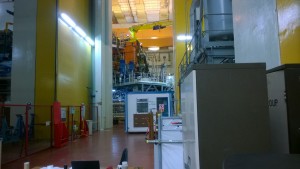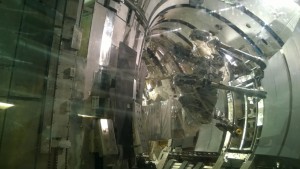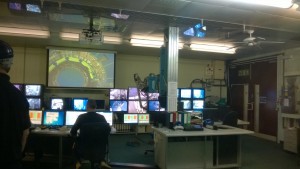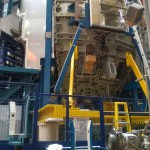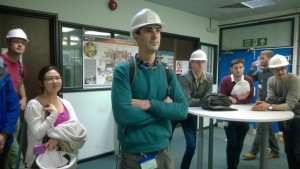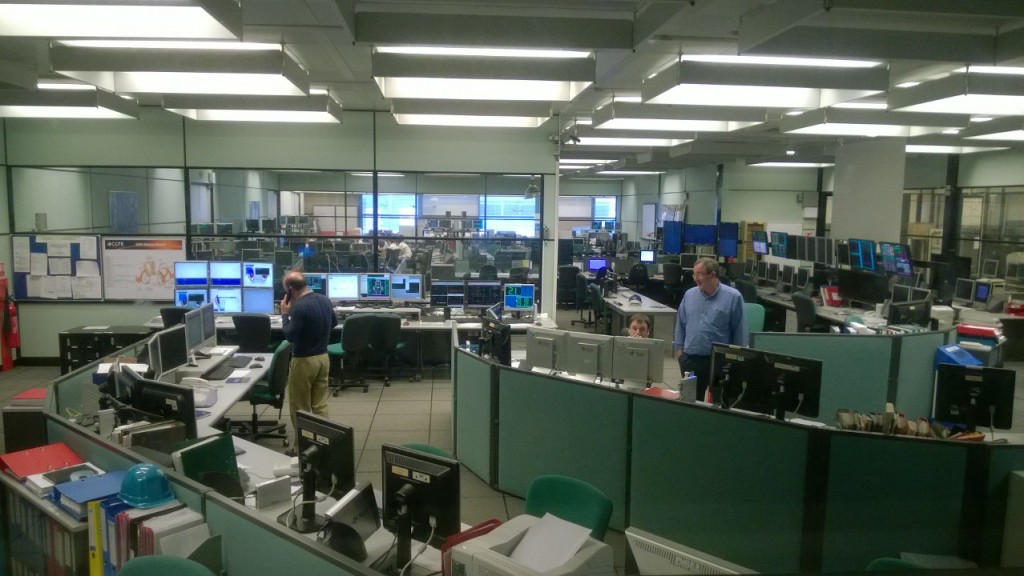
Today the SDG, well 10 members of it, visited the Culham Centre for Fusion Energy just south of Oxford. It was well worth the trip. We learned more about nuclear fusion, most of it similar to the SDG talk we had by Dr. James Buchanan last term, but also saw the reactors (MAST and JET) in the flesh so to speak. It really is an impressive operation! From a mere logistics point of view, managing such huge projects, building such complicated machines and coming up with the science that is not just innovative, but really works is just astounding.
What is Nuclear Fusion?
Here is some basic information about nuclear fusion and how it works. It will also help in understanding some of the terminology used below to describe the reactors.
Fusion, at least in its current form occurs when deuterium and tritium, two isotopes of hydrogen are combined together to form helium and a free neutron. The mass of helium is less than the sum of the deuterium and tritium parts, and through the E=MC² formula, this means that 17.6 MeV of energy is released per reaction. Pretty cool.
In order to create the environment for fusion, a very hot (over 23 million degrees Celsius) electrically charged gas, called a plasma needs to be sustained for a period of time, or what is termed a pulse. This plasma contains the deuterium and tritium parts and the high temperature environment enables fusion to occur.
The advancements in nuclear fusion have focused largely around being able to create enough heat so that fusion can occur whilst also having magnets strong enough to control the plasma and systems to take away the by-products of fusion. The end result will be an environment that can not only sustain the plasma for longer periods of time (from 0.5 seconds in MAST to 40 seconds in JET to hour in ITER to hours in DEMO) but will able to create temperatures that cause ignition, the point at which the plasma generates its own heat, just like the sun. It is envisaged that ITER will be the first reactor to achieve ignition, generating 10 times more energy than what is put in, adding a potential 500 MW to the grid. DEMO will hopefully generate >18 times more energy than put in with 1800-2100MW.
Anyway, enough of that. On to some facts and pictures about MAST and JET.
MAST – (Mage Amp Spherical Tokamak)
Some info about MAST:
- MAST is one of the world’s two leading spherical tokamak (ST) reactors alongside NSTX at Princeton, USA;
- It can sustain a pulse (the time plasma, electrically charged gas, is held in the reactor) for .5 seconds due to instabilities in the plasma field which has temperatures up to 23 million degrees celcius!
- It’s currently in maintenance phase to provide the technology to
- heat the plasma further;
- sustain the fusion length 10x longer than at present; and
- improve the exhaust which removes the helium by product of fusion.
Some pictures of the MAST parts can be seen here.
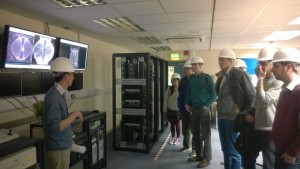
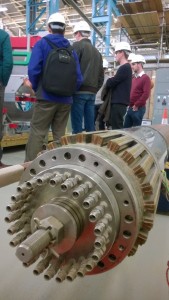
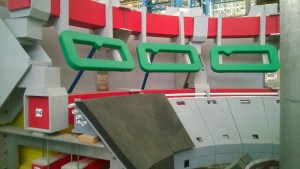
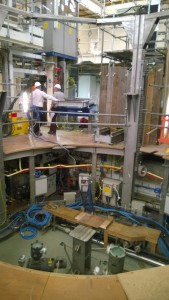
JET
Some info about JET:
- When JET is running, it consumes 1000MWh, 600MW is from the UKs power grid (1% of the total grid capacity…pretty impressive). They have a direct line to the UK grid in case they are told not to switch on the reactor in periods of unexpected high demand.
- Two massive fly wheels are used to generate the additional 400 MW via kinetic energy. The rotor is 9 meters wide and weighs 775 tons.
- For each 40 second run of JET, up to 60GB of data is generated.
- It currently holds the world record for energy generated by fusion (5MW).
- At present it has a Q value (efficiency metric) of 0.67, meaning that it generates slightly .67 times less energy than put in. Still impressive and that value will be 10 for ITER – 10x more energy created than required to produce it.
